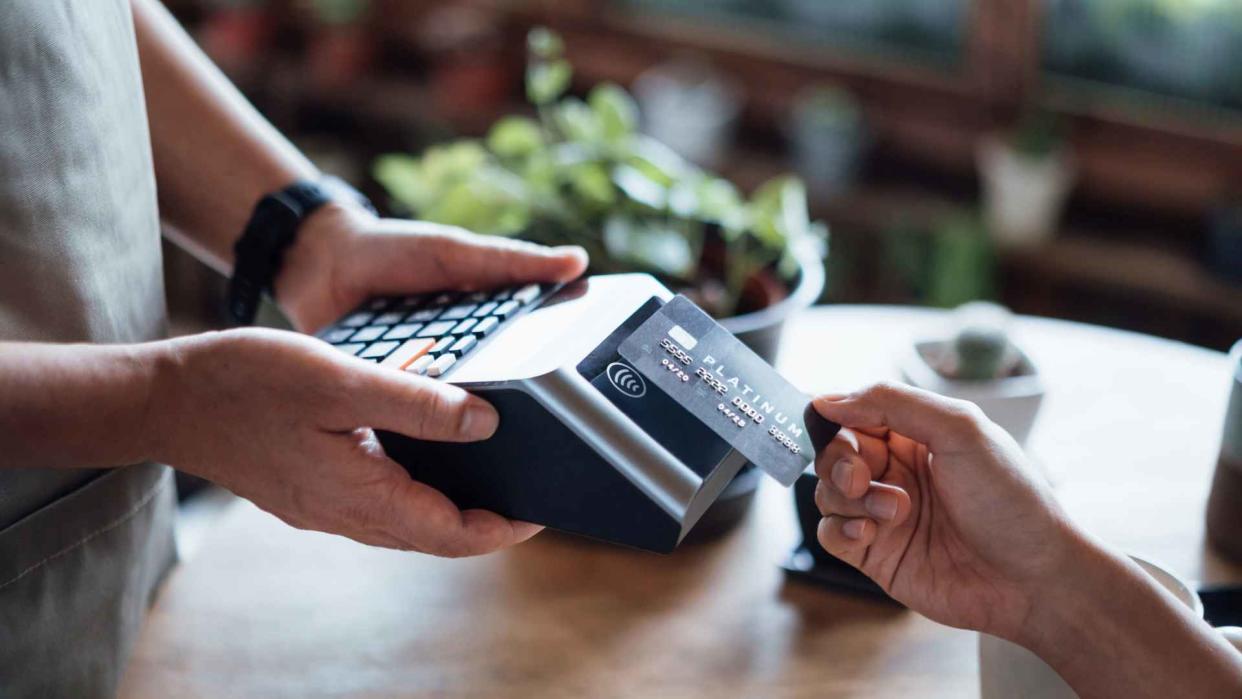11 States With the Highest Retail Sales Tax

Taxes — whether state income taxes, property taxes or sales taxes — vary widely, depending on where you work, live or shop. And that’s especially true when it comes to sales tax.
Check Out: I’m a Frugal Shopper — 7 Things I Never Waste Money On
Read Next: 5 Genius Things All Wealthy People Do With Their Money
In all, 45 states and the District of Columbia assess sales taxes on most purchases. There are, of course, exceptions — and those vary from state to state, too.
Confusing, isn’t it? GOBankingRates turned to the Tax Foundation for answers about state tax rates to find out where you’ll pay the highest amount on your purchases. Keep reading to see why that list isn’t exactly what it seems.
No State Sales Taxes Here
Five states do not assess a statewide sales tax, and they run from coast to coast. If you live in Alaska, Delaware, Montana, New Hampshire or Oregon, you won’t pay a state tax on your purchases.
Learn More: Billionaires vs. the Middle Class: Who Pays More in Taxes?
The Next 10 Lowest States Concerning Retail Taxes
Among the states that assess a retail tax, Colorado’s rate is the lowest at 2.9%, per the Tax Foundation, meaning you’ll pay $2.90 in state tax for every $100 you spend.
The other nine:
4%: Alabama, Georgia, Hawaii, New York and Wyoming.
4.2%: South Dakota.
4.225%: Missouri.
4.45%: Louisiana.
4.5%: Oklahoma.
The 11 States Charging Highest Retail Taxes
So, in which states can residents expect to pay the highest state taxes on retail purchases? These are the top 10 — plus one more for a tie — and they come with a caveat:
7.25%: California.
7%: Indiana, Mississippi, Rhode Island, Tennessee.
6.875%: Minnesota.
6.85%: Nevada.
6.625%: New Jersey.
6.5%: Arkansas, Kansas, Washington.
But That’s Not All
So what’s the caveat? State taxes don’t represent the only retail taxes assessed. In 38 states, local sales and use taxes are allowed to be assessed by counties and municipalities and added to the state tax, according to the Tax Foundation. And depending on where you’re spending your money, the local taxes could equal or exceed the state tax.
In Albany County, New York, for example, the state rate of 4% is compounded by a 4% local tax. In Seattle, Washington, effective April 1, shoppers will have to figure in a local rate of 3.85% on top of a state rate of 6.5% for a total of 10.35%. That means a $100 purchase in Albany will total $108. In Seattle, prepare to pay $110.35 for that same $100.
And in Colorado, that low state tax rate of 2.9% isn’t all you’ll pay when you buy something. Colorado allows local governments to charge a sales and use tax that averages 4.907%, the Tax Foundation reports.
Even in Alaska, which doesn’t charge a statewide tax, local taxes come into play. Alaska law allows for a local tax that averages 1.821 percent, according to the Tax Foundation. With that rate, Alaskans would pay $1.821 in retail taxes on every $100 purchase, adding $1.82 to a $100 total at checkout.
The five states that have the highest average combined local and state taxes, per the Tax Foundation, are:
9.56%: Louisiana.
9.55%: Tennessee.
9.45%: Arkansas.
9.38%: Washington.
9.29%: Alabama.
If you plan to spend money on vacation or in an unfamiliar spot, it helps to check out the sales tax first to prevent sticker shock, especially if you’re from a no-sales-tax state. Specific information for cities, towns and counties usually is available on the website of state taxation departments.
More From GOBankingRates
This is One of the Best Ways to Boost Your Retirement Savings in 2024
6 Things You Should Never Do With Your Tax Refund (Do This Instead)
This article originally appeared on GOBankingRates.com: 11 States With the Highest Retail Sales Tax
